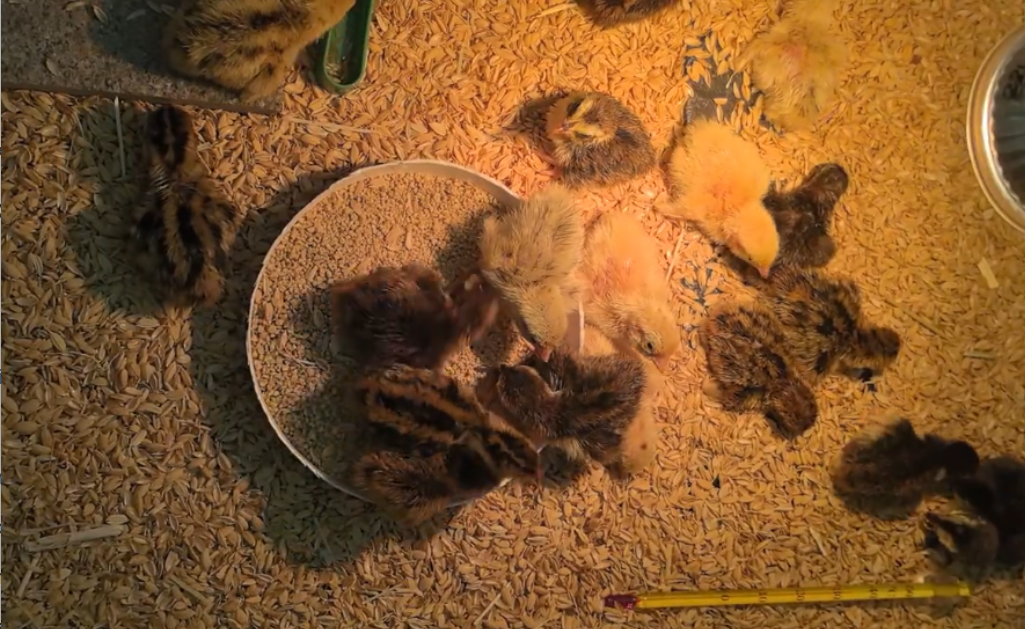Introduction
If you’ve ever tried hatching quail eggs, you know that success depends on more than just setting eggs inside a warm box. Temperature consistency, humidity control, and proper turning are all critical. That’s where modern incubators like the EggBloom 3-Tray Automatic Quail Incubator come in.
Marketed as one of the best quail incubator options for beginners and small-scale breeders, this unit promises automation and ease of use. In this review, we’ll cover its core features, real performance, pros and cons, and who it’s best suited for.
Product Overview and Key Specs
-
Name: EggBloom Automatic Egg Incubator (3 trays)
-
Compatible Species: Quail, chicken, duck, goose, pigeon
-
Core Functions: Automatic turning, precise temperature control, automatic water refill, built-in LED candling light
-
Preset Modes: 4 programs (chicken, duck, goose, pigeon) with pre-calibrated temperature, humidity, and turning cycles
-
Power: 110V/220V household power + 12V backup battery
-
Design: ABS plastic shell, detachable trays, easy cleaning
-
Price: Around $160 with free worldwide shipping
👉 Want to compare with other incubators? Browse our quail incubator category to see more best incubator for quail eggs options.
Feature Highlights
360° Airflow System
The unit uses spiral airflow circulation to maintain even heat distribution. This helps minimize cold spots or direct drafts that could harm embryos, giving more uniform hatch results.
Automatic Humidity Management
With an external water inlet and transparent viewing window, you can refill water without opening the lid. The auto-regulation keeps humidity around 55–60% during incubation and 70% during lockdown.
👉 For more context, check out our quail egg incubation guide to understand why humidity plays such a crucial role.
Automatic Egg Turning
Trays rotate 360° every 90 minutes, keeping embryos from sticking to the shell. This reduces deformation risks and ensures proper development.
Built-In LED Candling Light
Unlike buying a separate handheld torch, this incubator integrates a candling button directly on the control panel. To check fertility and embryo growth, simply remove an egg and place it under the light.
-
Pros: Saves money on extra tools, strong illumination for clear observation
-
Note: You’ll need to briefly open the incubator, so limit candling to key days (Day 7, Day 14) to avoid temperature and humidity fluctuations.
Four Preset Incubation Modes
The incubator includes species-specific programs for chickens, ducks, geese, and pigeons. Each adjusts temperature, humidity, and turning automatically.
-
Advantage: Ideal for beginners who don’t want to set parameters manually
-
Limitation: For quail and other birds, you’ll need to manually set conditions, which is why experience or reference charts are still important.
Dual Power Design
Supports both household AC and 12V DC battery. If you live in an area with unstable electricity, this feature can be a lifesaver.
Personal Experience with Quail Eggs
I recently used this incubator to hatch a batch of 28 quail eggs, running it at a constant 37.8°C (100°F).
-
I kept interference to a minimum, only checking temperature and humidity occasionally.
-
When humidity fluctuated, I adjusted the water bottle levels to fine-tune conditions.
-
I candled eggs on Day 7 and Day 14 using the built-in LED light to remove infertile or stopped embryos.
The results:
-
5 infertile eggs
-
3 stopped developing midway
-
20 healthy chicks hatched
What impressed me most was how little hands-on work was needed. The incubator even sounded an alarm when temperature spiked too high, which gave me peace of mind. Overall, it felt like a very “low-stress” hatch.
Pros
-
Highly automated: water refill, turning, candling
-
Stable temperature control (±0.2°C claimed)
-
Built-in candling function on the panel
-
Preset species modes for easy setup
-
Dual power option prevents hatch loss from outages
-
Compact, detachable design for easy cleaning
-
Affordable compared to professional-grade incubators
Cons
-
Candling requires opening the incubator briefly (humidity may drop)
-
Edge trays may run slightly cooler, so egg placement matters
-
Humidity sensor can read a bit low compared to external gauges
-
Limited capacity — not suited for industrial-scale hatching
-
Moving parts (turning motor) may wear over long use and require maintenance
Who Is It For?
-
Backyard keepers and hobbyists wanting to hatch quail or small poultry flocks
-
Beginners who prefer preset programs to avoid parameter mistakes
-
Small breeders who need consistent results without investing in industrial machines
-
Multi-species owners hatching chickens, ducks, pigeons, and geese
For large-scale or commercial operations, however, higher-capacity units may be better.
Internal Resource Links
If you’re considering this incubator, here are some additional guides from our blog to help you succeed:
-
Quail egg incubator checklist – A 17-day daily care schedule
-
Selecting the best quail eggs – How to choose and prepare eggs for maximum hatch rates
Together with the incubator, these resources can dramatically improve your hatch success.
Conclusion
The EggBloom 3-Tray Automatic Quail Incubator is one of the most reliable quail egg incubator for sale options in its price range. With automation, preset programs, and thoughtful design, it significantly lowers the barrier for first-time hatchers while still satisfying more experienced breeders.
It’s not flawless — you’ll want to cross-check humidity and be mindful of egg placement — but overall, it delivers on its promise of convenience and stability. For most small-scale keepers, it’s a practical, stress-saving investment.
👉 Ready to hatch your own flock? Explore the EggBloom quail eggs incubator for sale now.









0 Comments